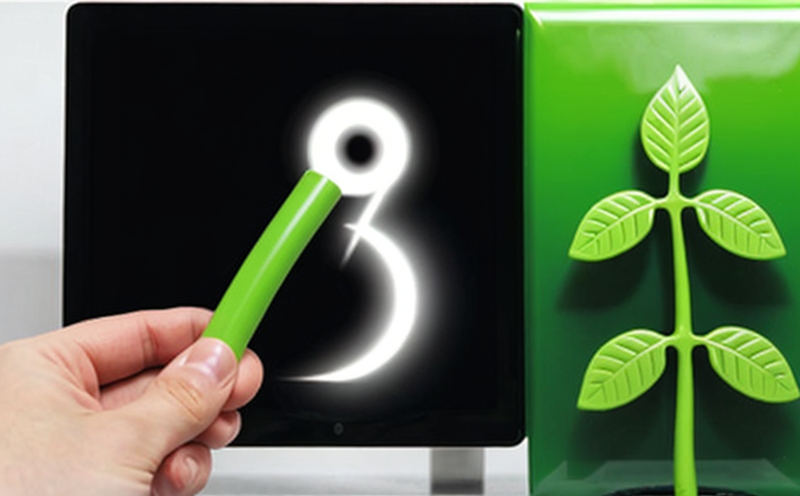EN 16247-4 Energy Performance Monitoring
The EN 16247-4 standard is a cornerstone for energy efficiency and sustainability testing in the building sector. This service focuses on monitoring the energy performance of buildings, ensuring compliance with European Union regulations aimed at reducing energy consumption and promoting sustainable construction practices.
The process begins with an initial assessment of the building's current state of energy performance. This involves detailed analysis using a variety of instruments such as thermographic cameras, infrared sensors, and air flow meters to identify areas where energy inefficiencies may exist. Specimen preparation is crucial at this stage; it includes selecting representative sections of the building for testing.
The core methodology outlined in EN 16247-4 involves continuous monitoring over a defined period (typically one year) using state-of-the-art equipment to gather data on energy consumption patterns, thermal behavior, and overall performance. This approach allows for accurate benchmarking against established standards such as ISO 5004.
To ensure accuracy, the service adheres strictly to specified procedures detailed in EN 16247-4. These include setting up monitoring points throughout the structure, calibrating instruments regularly, and validating results through comparative analysis with similar structures. Reporting is comprehensive, covering all aspects of energy consumption breakdowns, peak loads, and seasonal variations.
Compliance testing under this standard ensures that buildings meet stringent requirements set forth by EU directives on energy efficiency in buildings. It helps architects, engineers, and contractors design more sustainable constructions while also aiding existing property owners in identifying opportunities for improvement.
The service provides valuable insights into how different materials and systems affect a building’s overall energy performance. By leveraging this information, stakeholders can make informed decisions about upgrades or retrofits that will lead to reduced operational costs and enhanced environmental responsibility.
Moreover, the results of EN 16247-4 compliance testing contribute significantly towards achieving green certification for buildings, which is becoming increasingly important as sustainability becomes a key consideration in construction projects worldwide. With growing awareness about climate change and its impacts on urban areas, there’s never been more urgency to implement sustainable practices.
Our laboratory offers advanced facilities equipped with cutting-edge technology suitable for conducting EN 16247-4 tests efficiently. Our team of experts ensures that every aspect of the process—from initial consultation through final report issuance—is handled professionally and thoroughly.
Scope and Methodology
| Aspect | Description |
|---|---|
| Initial Assessment | Involves detailed analysis using thermographic cameras, infrared sensors, etc., to identify inefficiencies. |
| Continuous Monitoring | Data collected over a specified period (typically one year) using state-of-the-art equipment. |
| Instrument Calibration | Regular calibration of all instruments involved in the monitoring process. |
| Validation and Reporting | Involves comparative analysis with similar structures, providing detailed reports on energy consumption patterns. |
The methodology strictly follows EN 16247-4 guidelines ensuring precision and reliability in our findings. This approach guarantees that the results obtained are accurate reflections of the actual performance of the tested buildings.
Eurolab Advantages
- Experienced team specializing in energy efficiency and sustainability testing.
- Access to state-of-the-art equipment suitable for conducting EN 16247-4 tests efficiently.
- Comprehensive reporting that covers all aspects of the building's performance, including detailed breakdowns and seasonal variations.
- Thorough validation process ensuring high accuracy in our findings.
- Supporting compliance with EU directives on energy efficiency in buildings.
- Valuable insights into how different materials and systems impact a building’s overall energy performance.
Our commitment to quality control, combined with extensive experience and cutting-edge technology, ensures that you receive reliable and actionable results from your EN 16247-4 compliance testing.
Use Cases and Application Examples
- New Construction Projects: Ensuring new buildings meet stringent energy efficiency standards before they are completed.
- Retrofitting Existing Buildings: Identifying areas for improvement to reduce operational costs and enhance sustainability.
- Sustainability Certifications: Supporting the application process by providing necessary data to achieve green certifications.
| Case Study | Description |
|---|---|
| New Office Building Project | A new office building was constructed in accordance with EN 16247-4, ensuring it meets all required energy efficiency standards. |
| Old Factory Retrofit | An old factory underwent extensive retrofitting based on recommendations from an EN 16247-4 compliance test, significantly reducing its carbon footprint. |
| Sustainability Certification Application | A residential complex applied for a sustainability certification using data gathered through our EN 16247-4 tests as part of their application package. |
These real-world applications demonstrate the versatility and importance of EN 16247-4 compliance testing in various scenarios within the building sector. Our service not only helps meet regulatory requirements but also aids in achieving long-term goals related to energy conservation and environmental protection.





